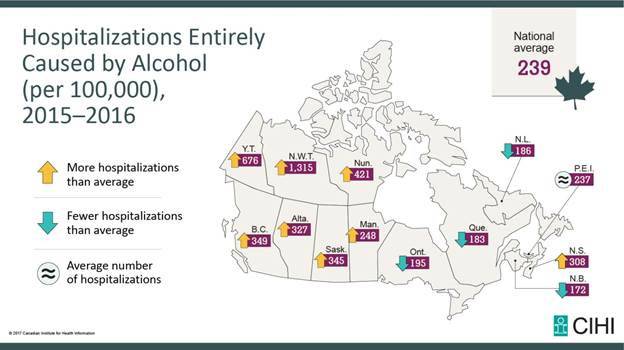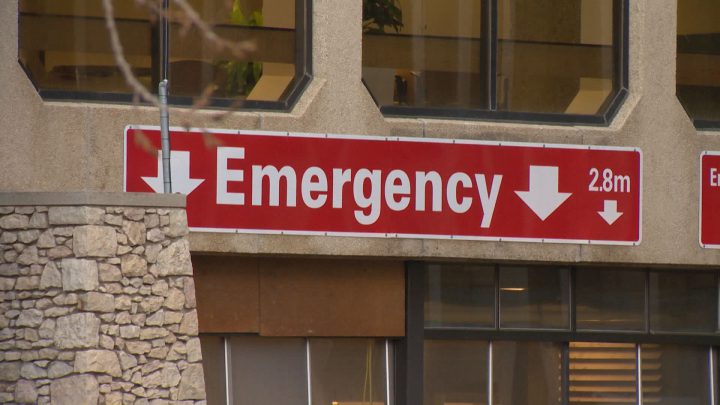Approximately 80 per cent of Canadians drink in moderation, which is why new numbers released by the Canadian Institute for Health Information (CIHI) on hospitalizations related to the over-consumption of alcohol is so startling.

In 2016, there were 77,000 hospitalizations due to alcohol abuse in the country. That’s more than the number of Canadians admitted to hospital for heart attacks.
“We found that alcohol is a growing health and social issue,” Jean Harvey, director of Canadian Population Health Initiative for CIHI, said.
“It’s gone up to the third-leading cause of death and disability globally, that’s up from being sixth.”
READ MORE: 77,000 Canadians hospitalized because of alcohol in 2016

The issue is most evident in the territories. Still, Saskatchewan’s hospitalization rates caused entirely by alcohol were 44 per cent higher than the national average.
“People usually don’t go so far down a pathway if everything is going well in their lives,” Tracy Muggli, director of mental health and addictions for the Saskatoon Health Region (SHR), said.

Get weekly health news
“It’s usually because there’s other issues that are affecting them and they’re using alcohol to self-medicate.”
READ MORE: Women drink almost as much alcohol as men: study
Men over 20 years old were admitted for alcohol poisoning more than women. Girls aged 10 to 19, however, had higher rates of hospitalization than boys.
“It could be because we have found that girls may choose higher alcohol content beverages, where boys may choose beer,” Harvey added.
There’s different physiology between girls and boys so it may be because of that or there may be some self-esteem issues that are going on there.”
The first-ever study also indicated which health regions in each province experienced this problem the most.
Here are Saskatchewan’s (*Rate of hospitalizations entirely caused by alcohol per 100,000 people):
- Saskatoon RHA 193
- Five Hills RHA 222
- Heartland RHA 245
- Sun Country RHA 290
- Sunrise RHA 292
- Regina Qu’Appelle RHA 339
- Prince Albert Parkland RHA 421
- Cypress RHA 434
- Prairie North RHA 553
- Kelsey Trail RHA 571
- Keewatin Yatthe RHA 1,245
- Athabasca Health Authority 1,397
- Mamawetan Churchill River RHA 1,474
Muggli, with SHR, credits outreach programs as well as a detox centre here with helping to curb our numbers.
“We have support agencies in our community such as The Lighthouse, we have some shelter and housing options that perhaps other communities don’t have. We have the police and crisis team here that sometimes can intervene and help direct people into services.”
Hospitalization rates were also two and a half times higher in areas where poverty is prevalent.
“There’s multiple factors that influence hospitalizations,” Dr. James Irvine, medical health officer for all three health regions in Saskatchewan with the highest numbers of admissions, said.
“I think there’s no question though that alcohol is a contributor to major health concerns, major utilization of health services but also social, community, school issues as well.”
His hope is that the Northern Alcohol Strategy that’s relatively new but promising, will help with the problem and that this latest data will serve as a good baseline to work from going forward.
Authors of the report also note that these numbers are just the tip of the iceberg – they don’t reflect visits to emergency departments as the results of things like motor vehicle collisions where alcohol was a factor.









Comments